- Rat species
- Black rat
- Species of rodents
- Decorative pets
Rats are the largest rodents of the mouse family, which are one of the long-standing neighbors of humans. These animals can be found in almost every corner of the planet. They are even inhabitants of islands located away from the mainland. Rodents can have a different coat color and even multi-colored eyes. What types of rats are the most common, this article will tell.
Not everyone knows what rats are. Many people divide these animals into street and decorative. However, in nature there are about 70 varieties of gnawing animals that differ in appearance, size and habitat. So, the palm rat living on palm trees lives on the Nicobar Islands, forest rodents are common in the forests of Mexico and the USA. The fuzzy rat is distinguished by its soft and barely noticeable fur cover.
There are also mammals with a flat tail and animals that do not have one. Curly rats are very attractive, eared rats are distinguished by their eccentricity. But the most, perhaps, the most famous representatives of the rat family are black, gray, Turkestan, black-tailed and fluffy-tailed rabbit rats. Photos of rat species can be seen below.
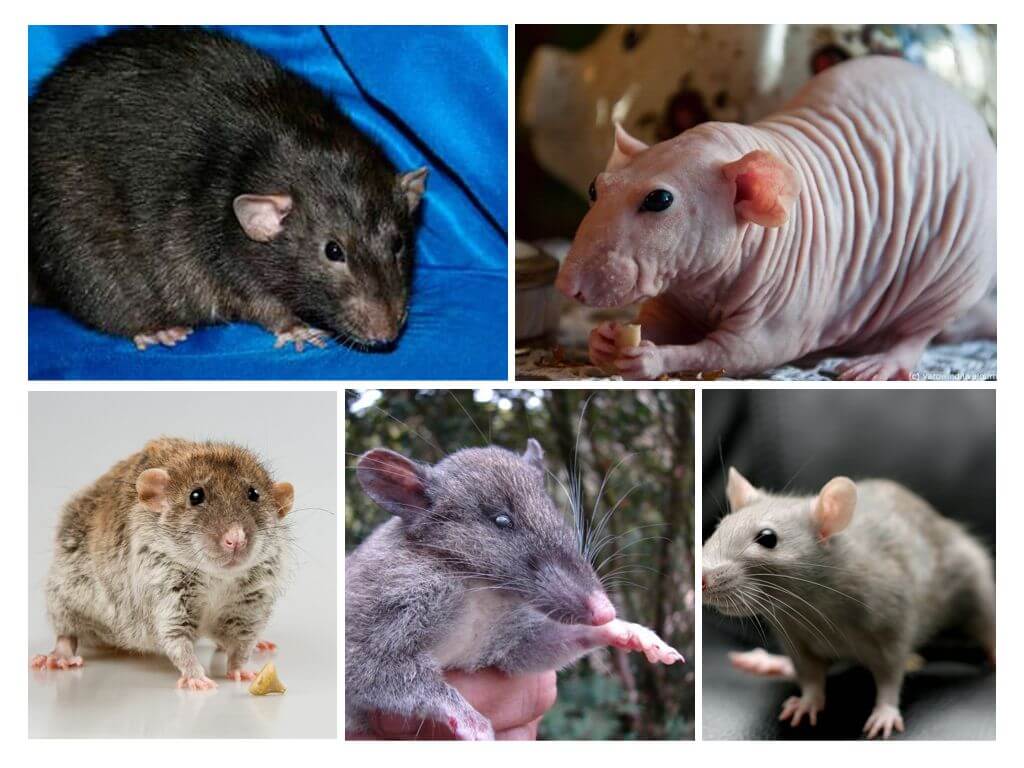
Gray rat
The gray rat (pasyuk) is one of the most common species of rodents that live in almost all corners of the planet: in many countries of Europe, in Canada, in the north of the United States. Animals are not adapted to life only in the polar latitudes. Pasyuki prefer to live in the countryside next to large pets, using their food for food. Under natural conditions, they settle where there is access to water. They feed on birds, their eggs and chicks, as well as field voles and carrion.
You can meet gray rats in the city. Their favorite habitats are cellars, garbage chutes, warehouses, as well as various outbuildings. That's why gray rats also called barn.
The appearance of the rat familiar to many. The body length of the animal is about 25 cm, the tail is always shorter (does not exceed 20 cm). Pasyuk's fur, in comparison with its relatives, is coarser and stiffer. The color of the coat can vary from gray to red tones. In many respects, it still depends on age: in young individuals, the coat is usually light gray in color, and it becomes redder with age. In connection with which even a brown rat is often found. A clear border of flowers is visible on the light abdomen of the pasuk. On a wide and dull muzzle there are a light mustache, pinkish slightly pointed ears and small black eyes.
On a note!
Gray rats are highly fertile: up to 5-8 broods may appear in a year, each of which 7-10 baby rats.
Black rat
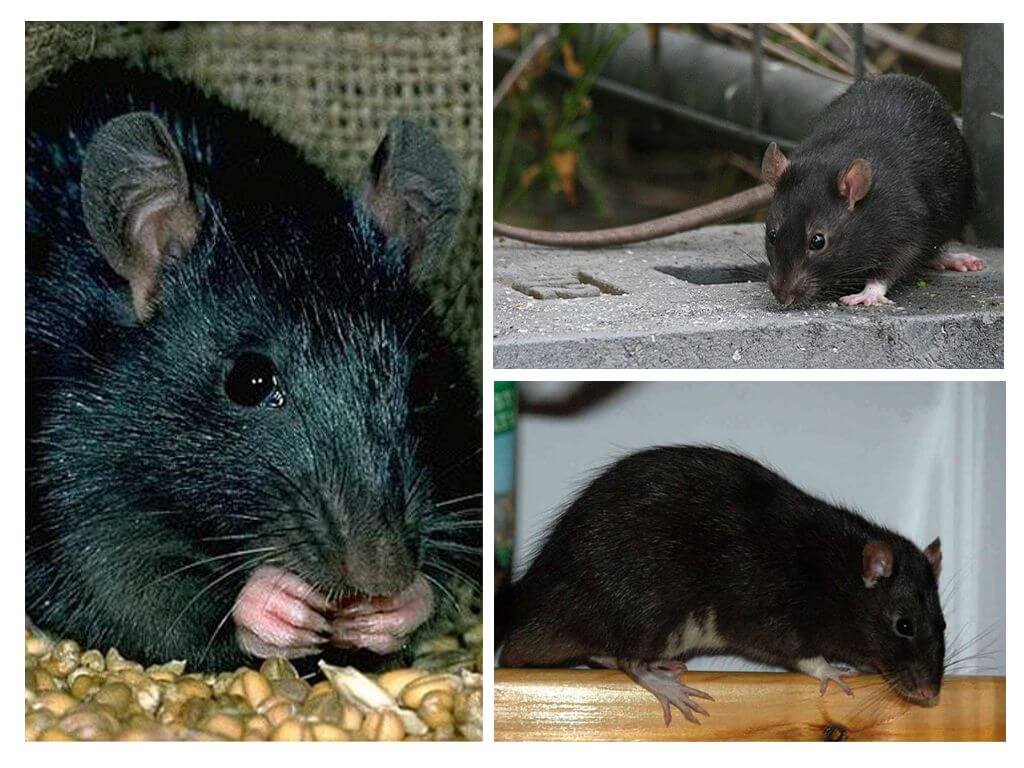
This variety of rats is no less common. Black rodents live in Europe and Asia, they are also found on the American, Australian and African continents.
Black rats are inhabitants of megacities. They prefer to settle on the upper floors of high-rise buildings. Very often mammals can be found on a livestock farm. Favorite animal habitats in the private sector include attics.For this reason, they began to be called roofing rats. Animals are very curious, they are in constant motion, exploring new territories.
Under natural conditions, black rats live in the forest zone, building nests from small branches and grass. They can also settle on stunted trees, eating plant foods, nuts, cereal grains or sunflower seeds. Do not disdain animals by worms and mollusks. Animals do not dig holes on their own, however, they can easily occupy the abandoned shelter of a small animal.
On a note!
A black rat is much less gray: its body size does not exceed 20 cm. It is also lighter in weight (100-350 g). Distinctive feature is long tail rat - it exceeds the size of the body of the animal in contrast to the gray congener.
What color are rats of this species, not everyone knows. It is surprising that the color of the rodent's fur, having a metallic luster, can vary from black to light brown. The abdomen of the animal is often ash or gray.
But in reproduction black rats not as prolific as their gray counterparts. They do not breed in the winter season, and in one brood they have fewer cubs.
Turkestan rat
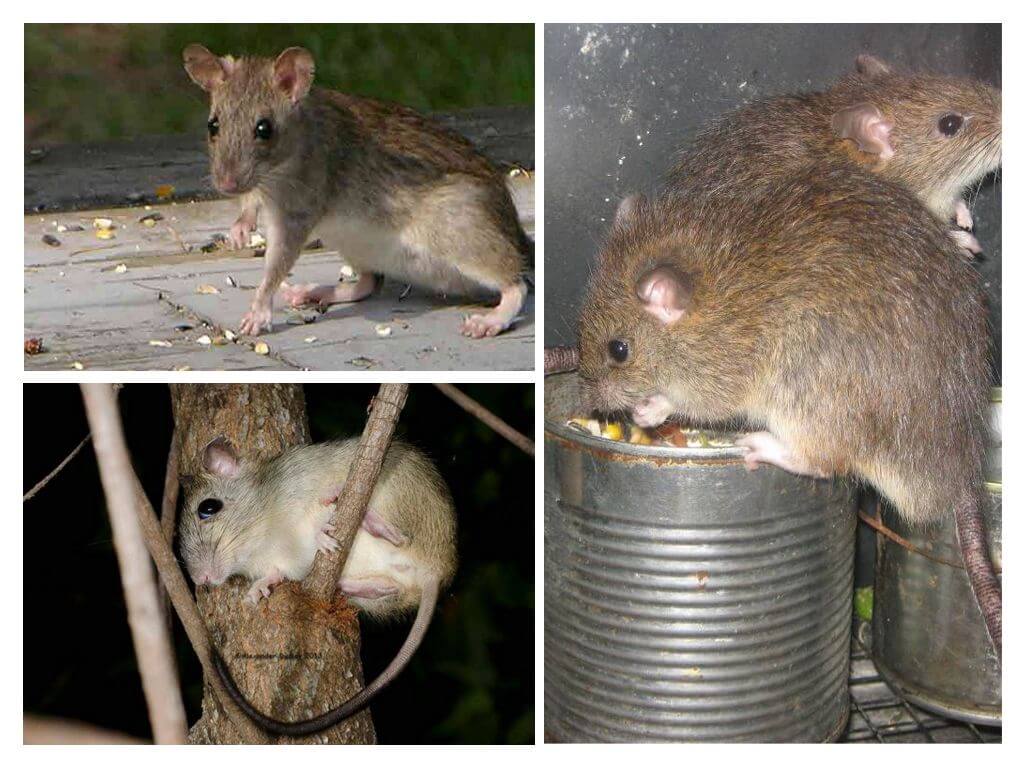
If we compare the above varieties of rats in body size and appearance, then the Turkestan rodent will take an intermediate place between black and gray relatives (its body length is 17-21 cm). The shape of the animal's face is the same as that of the pasyuk. The small ears are covered with a dense short pile. The same surface has a tail equal to the length of the body. The back of the animal is painted in a reddish-brown color, the abdominal zone is yellow-white, less often pistachio shades.
The Turkestan rat is found in northern India, Tashkent, Samarkand, and the mountainous regions of the Western Tien Shan. In nature, a refuge for her are crevices of rocks, hollows, as well as burrows of other rodents. Often it lives in residential and farm buildings.
Interesting!
In spring, animals feed on bulbs and seeds of plants, in the summer-autumn period they eat the fruits of various tree species and shrubs. It is possible the use of chicks and eggs.
Living next to humans, animals are able to breed all year round. However, in the cold season, the ability to reproduce is markedly reduced. In the wild, the female hatches up to 4 litters during the year, in each of which up to a dozen pups.
Black tailed rat
The black-tailed rat is another species of the mouse family, the distinguishing feature of which is a tail covered with thick hair. Animals are common in New Guinea and Northern Australia. Their habitat is the coastal zone of rivers and other bodies of water, where, after the surf, rodents collect food thrown out by the waves. Animals hide in hollows or between thick branches of trees, where females make nests for future offspring. The presence of fur is a distinctive feature of born rat pups. In addition, they are much faster than their relatives see and grow.
Small rat
The taxonomy of the rat does not end there; its continuation is the small rat. The Pacific or Polynesian rodent is found in the Philippines, New Zealand, as well as countries in Asia and New Guinea. The habitat of the animal is the forest and forest-steppe zone.
Depending on the area of distribution, the body length of the animal varies. The animals that inhabit the mainland of the continent reach up to 15 cm, the small rats living on the islands do not grow more than 11 cm. The animal’s weight is also small: from 40 to 80 g. The hair of a small rodent on its back is brown, in the region of the abdomen it is light tones. Also, its distinctive characteristics include the pointed shape of the muzzle, large ears and short legs. The tail has a length commensurate with the size of the body, and is covered with scaly rings.
The diet of the small rat is very diverse, it includes: seeds, fruits and parts of plants, as well as insects, spiders, bird eggs and tiny chicks.
Small rats breed throughout the year, the reproduction process becomes especially active in the summer.
Interesting!
For a year, one adult female leads no more than 4 litters, each of which 5-9 individuals. The female rats are constantly guarded and controlled by the female, moreover, she feeds them milk for a month.
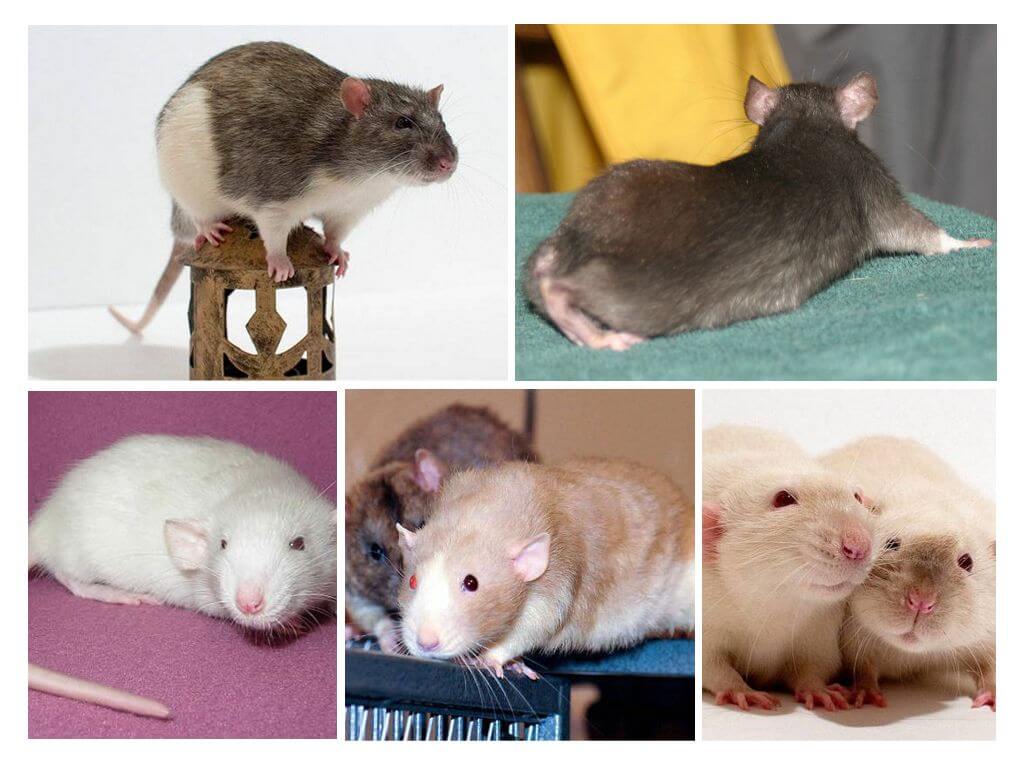
Rat Standard
One of the most popular varieties of decorative rats is the standard breed rat. The animal has the most harmonious constitution: it has a massive elongated body, a shiny short coat, moderately wide ears and a long tail covered with wool. In weight and body size, he is similar to his gray counterpart. Males are larger, but less energetic.
On a note!
When wondering whether a rat is an animal or not, one can answer with accuracy that it is the most perfect animal, which is distinguished not only by physical strength and endurance, but also by its mind. So, standard view rats do not attack humans even with awkward handling, because they get used to their master.
Rat Sphinx
Hairless or hairless rat is a type of decorative rodent that does not have hair on the body. Rare hair can occasionally be observed in the abdominal region, on the legs or head. Some representatives of this type have vibrissa (mustache). The slightly wrinkled pink skin of animals does not attract many animal lovers.
Tailless rat
From the name it is clear that the main distinguishing characteristic of this type of rat is the complete absence of a tail. The pear-shaped body shape is another type of animal. Rodents of this breed are very active, intelligent and sociable. Their wool can be standard or curly, as well as different colors. Often there are individuals that do not have a hairline.
Curly rat
Rats of this type have dense curly hair. However, the pile on the abdomen is less wavy than on other parts of the body. The remaining hair is completely absent, but if it is, then in small quantities. On the side, curly hair looks tousled. The mustache of such rodents, compared with their counterparts, is less long, but more twisted.
Dumbo
Dumbo is another breed of rat. A distinctive characteristic of these animals are low-set ears, which are larger and rounded in shape. Rodents have a short body, a pear-shaped head with a protruding nape, and a long tail. The coat can vary both in color and in structural structure.
Rat with eyes of different colors
This variety of decorative rats is very unusual. The eyes of animals are of different colors. Usually 3 colors are combined: black, red and dark ruby. Interesting fact about these rats - the greater the degree of contrast between the color of the eyes, the more valuable the rodent.
The coat color of rats of ornamental breeds can be not only gray, brown, black or white, but also red and even blue. Moreover, each tone corresponds to a certain eye color. So, in black rodents, their eyes are always black, in white they can be both black and red, eyes of a ruby color in rats of blue color. In addition, the color of the coat may not be uniform, all sorts of stains and marks may be present on it.
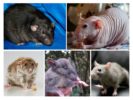
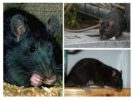
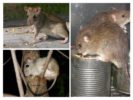
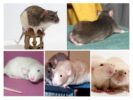
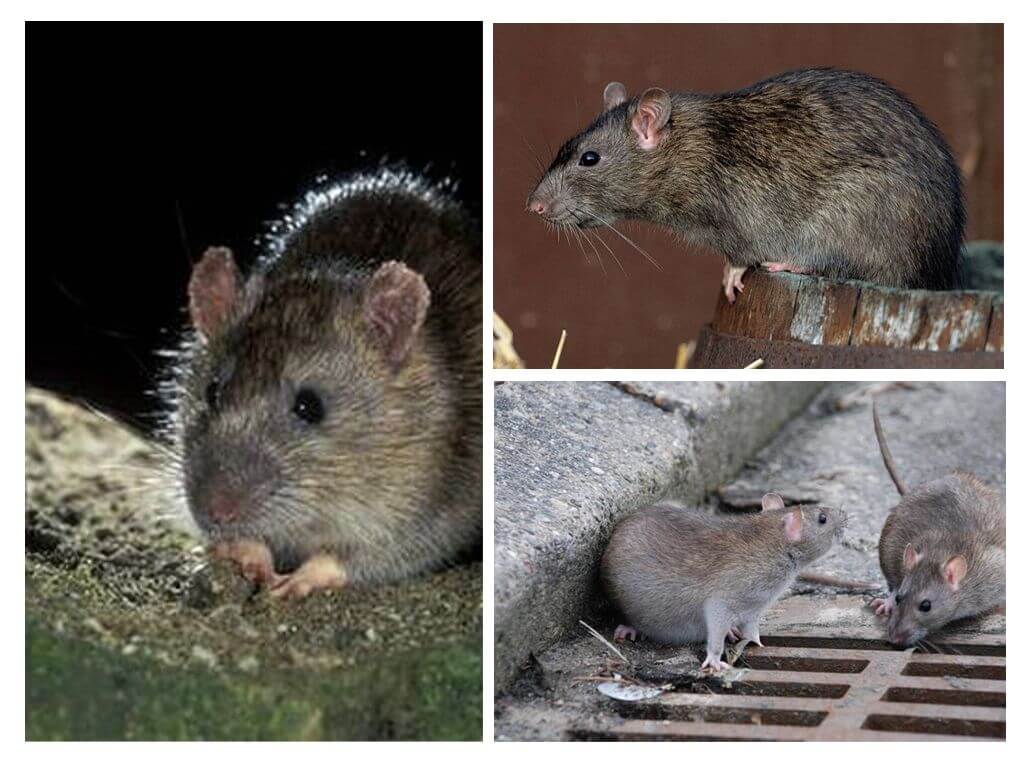
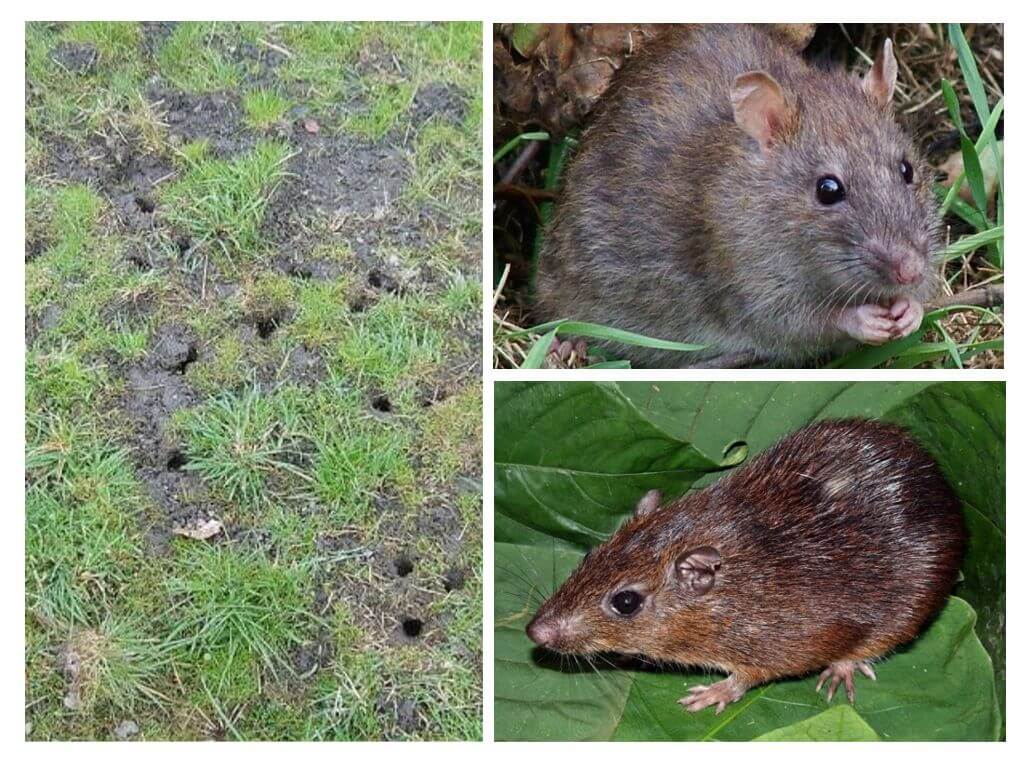
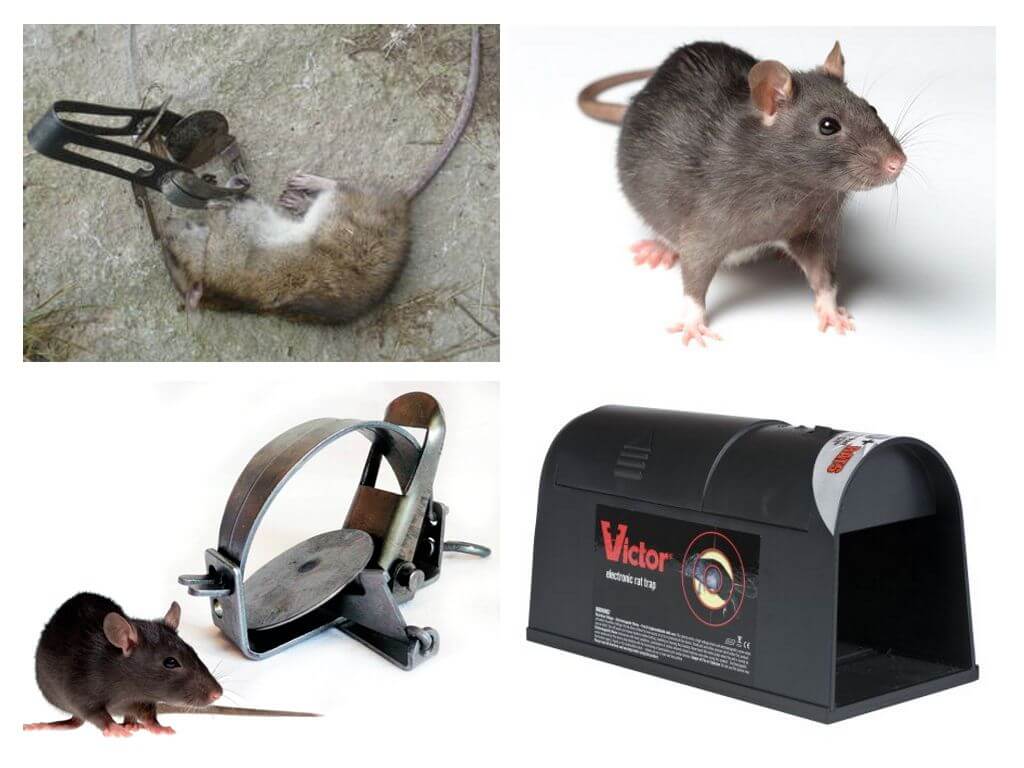
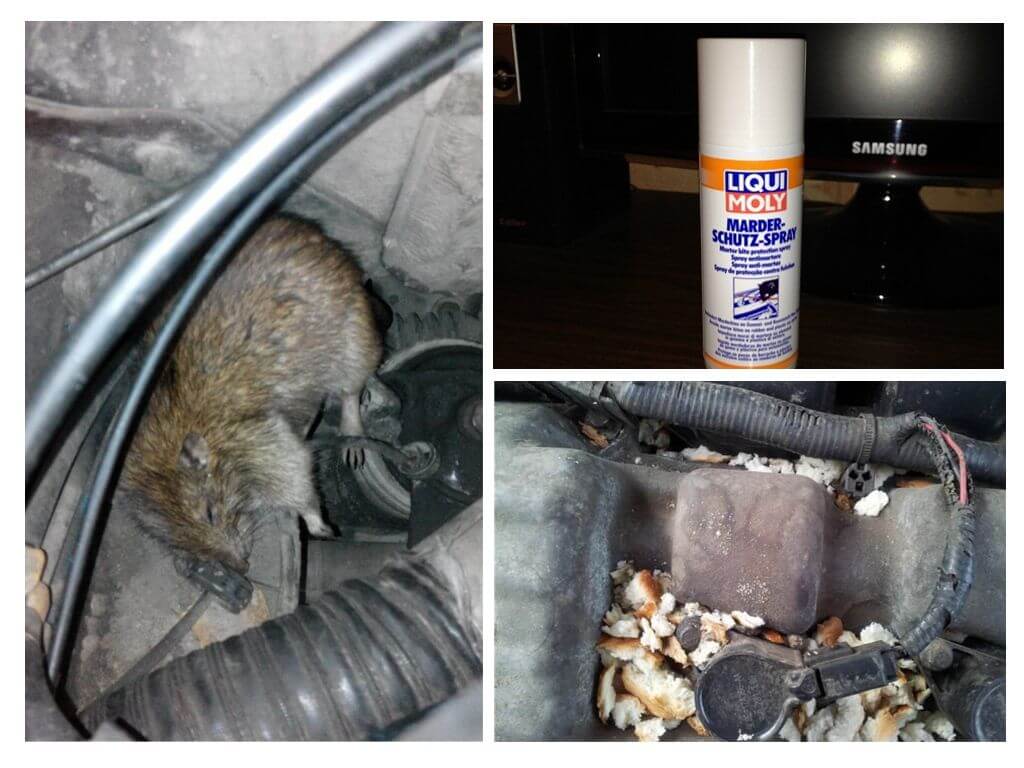
Could all species be indicated ... Exulans mentioned, but Tanezumi didn’t please ..?